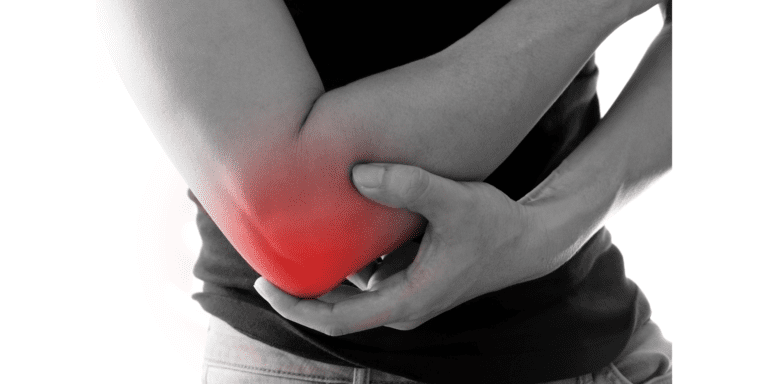
Suffering from tennis elbow is irritating, But fret not; this article will help you understand why tennis elbow occurs in the first place and how to deal with it.
How does tennis elbow occur?
Most of the time, it occurs due to repetitive overuse of the wrist extensor tendon located at the outer side of the elbow (when your palm faces forward), and more often than not, it happens on the dominant arm. While the name ‘tennis elbow’ suggests that it relates to playing tennis, it can actually occur in athletes in other sports, housewives, office workers, etc., whenever their vocations involve prolonged or sudden increases in the use of the wrist extensors.
Once upon a time, it was believed that inflammation occurs in the wrist extensor tendon during a tennis elbow flare, but research has since disproved this as no inflammatory markers have been found in such tendons. Instead, the collagen of the overused tendon was found to be disorganized, and its blood flow was altered. In such a state, the injured tendon is too weak to perform its function of transmitting force from the wrist and produces a painful sensation when it is required to do so. Hence, the goal of treatment for tennis elbow is to restore the tendon composition, integrity and strength.
What are the signs and symptoms of tennis elbow?
Typically patients suffering from tennis elbow complain of pain at the outer side of the elbow, especially during hand grip activities such as opening door knobs or bottles, wringing towels, handling rackets, etc. During the acute phase, they may also experience pain and stiffness when they first wake up in the morning.
Examination of the involved elbow usually revealed pain on resisted wrist extension, a weak and painful hand grip, tenderness to palpation at the outer elbow, and sharp pain on passive stretching of the wrist extensors.
Physiotherapy Treatments for tennis elbow
Since tennis elbow arises from overuse of the wrist extensor tendon, moderating its loading to promote recovery is the key. Continuing current overloading would hamper improvement at best and worsen it more often than not. On the other hand, prolonged underuse beyond required would result in understimulating the repair activities occurring in the tendon, hindering its restoration of composition and function. Hence, the paramount of the treatment for tennis elbow is to moderate the load on the wrist extensor tendon along different phases of recovery so that the tendon is sufficiently stimulated and yet not overloaded. A physiotherapist can guide you on this based on your training intensity, work ergonomics, and arm’s capacities when you present for assessment.
An elbow brace is found to be helpful at the initial onset of tennis elbow. If the patient is not contraindicated, blood flow restriction is also helpful at the initial stage when the wrist extension load is much restricted by pain.
Ultrasound, shockwave therapy and dry needling are commonly seen to be used for tennis elbow in various physiotherapy clinics. However, their effectiveness is either short-term or controversial, pending further research.
While this article focuses on physiotherapy treatments for tennis elbow, there are also medical treatments for this condition, such as NSAIDs, PRP, surgery, etc. If you are keen to explore beyond physical modalities, you may discuss these with your doctor.
Conclusion
Navigating tennis elbow can be a real pain, affecting racket swingers and anyone caught up in the daily grind of wrist-intensive activities. If you are suffering from it, work with a physiotherapist to nurse it back to its sporty and functional state so that you can resume work, play and family duties as you wish.
Reference:
Cuttsa S et al. Tennis elbow: A clinical review article. Journal of Orthopaedics 17 (2020) 203–207
Dimitrios S. Lateral elbow tendinopathy: Evidence of physiotherapy management. World Journal of Orthopedics 2016; 7(8): 463-466
- Karanasios S et al. Low-Load Resistance Training With Blood Flow Restriction Is Effective for Managing Lateral Elbow Tendinopathy: A Randomized, Sham-Controlled Trial. Journal of Orthopaedic & Sports Physical Therapy 2022;52(12):803-825
- Sims SEG et al. Non-Surgical Treatment of Lateral Epicondylitis: A Systematic Review of Randomized Controlled Trials. HAND 2014; 9(4): 419-446